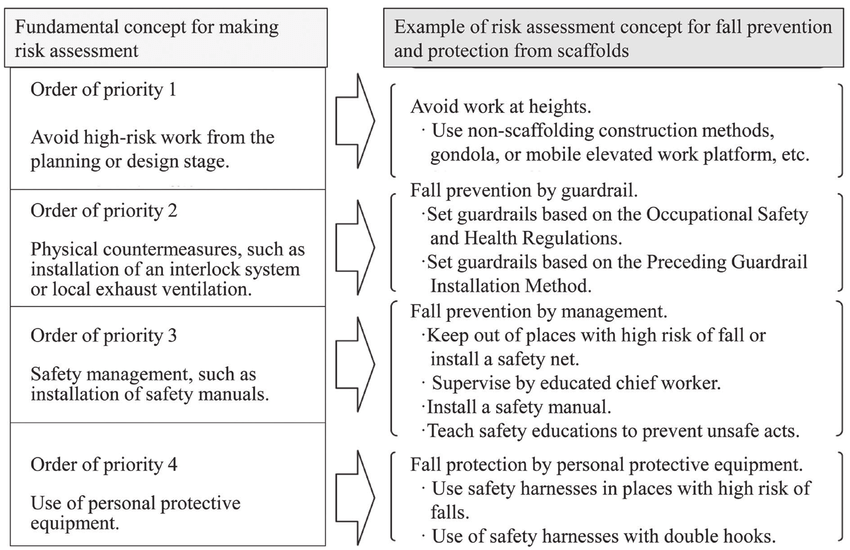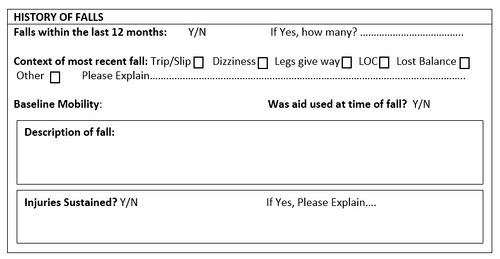Dementia Fall Risk for Beginners
The smart Trick of Dementia Fall Risk That Nobody is Discussing
Table of ContentsThings about Dementia Fall RiskThe Only Guide for Dementia Fall Risk4 Easy Facts About Dementia Fall Risk ShownThe Basic Principles Of Dementia Fall Risk
A fall danger evaluation checks to see exactly how most likely it is that you will drop. It is mostly done for older adults. The analysis typically consists of: This consists of a collection of concerns regarding your total health and if you've had previous drops or problems with balance, standing, and/or walking. These tools test your strength, balance, and stride (the means you walk).Treatments are recommendations that may lower your danger of dropping. STEADI includes three actions: you for your danger of falling for your threat variables that can be boosted to try to prevent drops (for example, equilibrium problems, impaired vision) to minimize your threat of falling by using reliable methods (for instance, supplying education and sources), you may be asked a number of questions consisting of: Have you fallen in the past year? Are you worried concerning dropping?
If it takes you 12 seconds or even more, it may indicate you are at greater risk for a loss. This test checks stamina and equilibrium.
Move one foot halfway ahead, so the instep is touching the large toe of your various other foot. Relocate one foot fully in front of the other, so the toes are touching the heel of your various other foot.
The Best Guide To Dementia Fall Risk
The majority of falls happen as an outcome of numerous adding elements; consequently, taking care of the danger of falling starts with recognizing the variables that add to drop risk - Dementia Fall Risk. A few of the most pertinent danger elements include: Background of prior fallsChronic medical conditionsAcute illnessImpaired stride and balance, reduced extremity weaknessCognitive impairmentChanges in visionCertain risky drugs and polypharmacyEnvironmental variables can additionally enhance the danger for falls, consisting of: Insufficient lightingUneven or harmed flooringWet or slippery floorsMissing or damaged hand rails and get barsDamaged or poorly fitted tools, such as beds, wheelchairs, or walkersImproper use assistive devicesInadequate supervision of individuals staying in the NF, including those that exhibit hostile behaviorsA successful loss danger monitoring program requires a thorough professional assessment, with input from all members of the interdisciplinary group

The treatment plan need to likewise include treatments that are system-based, such as those that promote a secure atmosphere (ideal illumination, hand rails, get bars, etc). The performance of the interventions should be assessed occasionally, and the care plan revised as needed to reflect modifications in the autumn threat assessment. Implementing an autumn threat administration system making use of evidence-based ideal practice can minimize the frequency of falls in the NF, while restricting the potential for fall-related injuries.
Indicators on Dementia Fall Risk You Need To Know
The AGS/BGS guideline recommends screening all grownups aged 65 years and older for loss risk yearly. This testing contains asking individuals whether they have dropped 2 or even more times in the past year or sought clinical interest for an autumn, or, if they have not dropped, whether they really feel unsteady when walking.
People who have actually fallen as soon as without injury should have their balance and stride reviewed; those with stride or balance irregularities must get extra analysis. A background of 1 fall without injury special info and without gait or balance issues does not require further analysis past continued annual loss threat screening. Dementia Fall Risk. A fall threat assessment is required as component of the Welcome to Medicare exam

Dementia Fall Risk - Truths
Recording a falls background is one of the top quality indicators for fall prevention and administration. Psychoactive medications in specific are independent forecasters of falls.
Postural hypotension can typically be minimized by minimizing the dosage of blood pressurelowering medicines and/or stopping medicines that have orthostatic hypotension as a negative effects. Use above-the-knee support pipe and copulating the head of the bed raised might also minimize postural decreases in blood pressure. The preferred elements of a fall-focused physical exam are received Box 1.

A TUG time higher than or equal to 12 seconds recommends high loss risk. Being incapable to stand up from a chair of knee height without utilizing one's arms shows boosted loss threat.